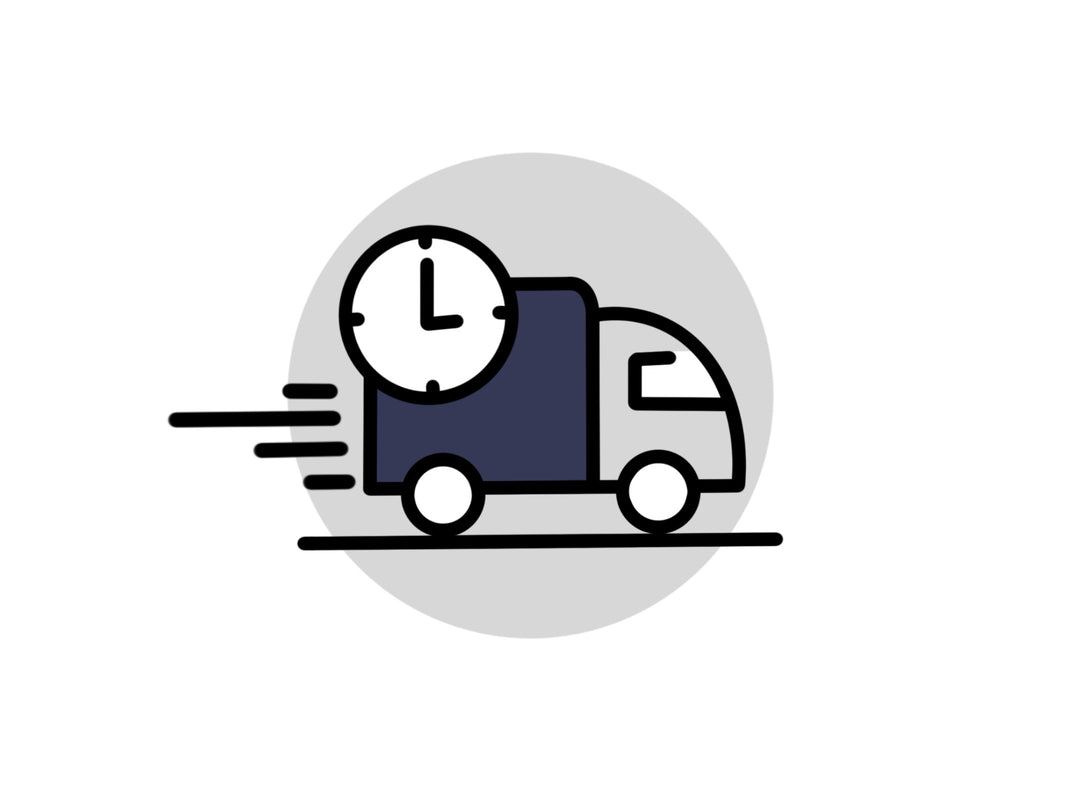The 4 Essential Montessori Mobiles (and Where to Buy Them)

Image by The Kavanaugh Report
As an Amazon Associate we may earn from qualifying purchases.
Montessori mobiles are one of the best elements to introduce the Montessori method to your newborn and easily make your baby's room more Montessori friendly from the beginning.
If you have a newborn child and you’re considering a Montessori approach, you might be curious about Montessori mobiles. You might want to know if they are a worthy investment for your child or if you should make an effort to make one.
Parents who have never used Montessori mobile toys despite raising kids the Montessori way will probably say mobiles are non-essentials. Those who have tried them might disagree because they have seen how babies respond to Montessori mobiles.
To be able to decide more confidently about this matter, you have to know more about it, right?
Below is a quick guide to Montessori mobiles that could help you with your decision.
What Are Montessori Baby Mobiles?
During their first six months, babies develop their eyesight slowly. Having a mobile hanging at the right height and angle and with the right details like color and motion can help encourage visual tracking.
Montessori Mobiles are designed to engage your baby without being overstimulated. This engagement assists with your newborn’s visual and cognitive development.
These mobiles are lightweight, so they easily move whenever there’s a soft breeze in the room.
Undisturbed time to watch the mobile will provide your infant the maximum results from these Montessori mobiles. Your baby will let you know when they are overstimulated from the mobiles by looking away.
There are four main types of Montessori mobiles that are typically offered to a newborn one after another:
The Munari Mobile
(Age: 0-2 Months)

The Montessori mobile series begins with the Munari mobile.
This will be the first mobile you should offer your newborn. You can begin using this mobile at birth, but it can be used all the way until six months of age if you did not begin using mobiles right away.
The Munari mobile is made of black and white shapes in a two-dimensional display. In this mobile, there can be spheres, lines, abstract shapes, and rods. The high contrast colors of black and white are best seen by infants with newly developing eyesight. Soft or muted colors are difficult for newborns to see.
Many people ask how high to hang a mobile above the infant? The mobile should be hung approximately 14 inches from the infant’s face. This distance allows enough space for the child to swing their arms under the mobile without a safety risk while still being close enough to allow the newborn’s developing eyes to focus on the mobile.
The Munari is typically designed with varying levels of display - for example, a black and white triangle may hang at 12 inches where a black and white circle hangs at 14 inches. The different distances help the child’s visual development as they focus from one object to another.
The point of exposure to math-oriented concepts during infancy is so they’ll be more familiar with them, and their abilities will quickly develop during preschool.
Here is a great Montessori mobile DIY video by Hapa Family Vlog:
The Octahedron Mobile
(Age: 1-3 Months)

The next mobile you should introduce to your baby is the Octahedron mobile.
This mobile presents primary colors and should be used when your baby is ready to take in those bright colors (usually around 7-weeks old).
Primary colors are used in Octahedron Mobiles because a baby is able to notice the difference between the high contrasted bold colors. The shapes in these mobiles are octahedrons made with triangles with all equal sides.
These octahedrons present three dimensional images to your infant and get your baby to use their two eyes at the same time.
Want more? Check out our article: A Quick and Easy Look at the Montessori Octahedron Mobile
Another great DIY video by Hapa Family Vlog:
The Gobbi Mobile
(Age: 2-4 Months)

The Gobbi mobile is the next in the series of Montessori mobiles.
The Gobbi mobile typically includes five spheres of a single color in varying shades. The spheres are hung in a diagonal, with the darkest sphere being closest to the baby’s face and the lightest sphere being the furthest away.
When the baby reaches the age of three months, they can already see the color spectrum completely. That is the perfect time to use the Gobbi mobile. The idea behind the Gobbi mobile is to refine a child’s chromatic sense as they are presented with a set of lightweight balls in the same color but different shades arranged in a gradient manner. They’ll develop their visual discrimination ability and attention to detail.
Gobbi Mobiles are typically made of styrofoam balls covered in embroidery threads of the same color in ascending shades.
When a baby uses a Gobbi Mobile, it provides them the opportunity to understand that the gradient colors are different. Differentiating between the varying shades helps an infant’s visual skills and depth perception.
DIY video by Hapa Family Vlog:
The Dancers Mobile
(Age: 3-6+ Months)

The final mobile offered in the Montessori series is the Dancer mobile.
These mobiles are made to look like abstract human shapes, with the head, arms, and legs moving individually. The material typically used to create the “dancer” is iridescent or shiny paper so that it is lightweight and will move in the natural airflow and catch the light at different angles.
Dancers Mobiles are used to give your baby a new opportunity to improve the visual tracking and depth perception.
This particular mobile teaches the baby that even when objects move, their shape and their color don’t change. This is an introduction to the concept of things that remain constant and things that change.
DIY video by Montessori for Babies:
Tips on How to Use a Montessori Mobile
There are few tips you should know before allowing your baby to use a Montessori Mobile, in order to keep your child safe and fully engaged.
- Before placing your baby underneath the mobile, make sure it is safely hung and can't easily be pulled down.
- We often have people ask how high to hang a mobile over the baby's crib. However, we recommend never to hang a mobile over your baby's bed, as this is a place intended for sleep. You don't want to confuse your baby into thinking their bed is a play area or a place for them to concentrate on anything other than sleep. That could cause struggles with falling asleep down the line.
- When deciding how high to hang the mobile, remember that Montessori Mobiles are used to watch only. They should be hung high enough so your baby cannot touch them.
- Open a window or turn on a fan to give the mobiles natural air movement.
- Put your baby under the mobiles after they are rested and full.
- Don't force your child to stay under the mobile. You want your baby to have the feeling of independence in choosing to use the mobile for concentration.
How to Hang Montessori Mobiles
Image by Hatchberry
The best way to hang your Montessori Mobiles is by using the Hatchberry FreeStand Mobile Arm.
Hatchberry, a brand dedicated to Montessori-inspired tools and parenting resources, offers the FreeStand Mobile Arm as a versatile addition to their product lineup. This beautifully crafted mobile arm is designed with parents in mind, providing a portable and screw-free solution for setting up Montessori mobiles anywhere in the home.
Made from premium birch plywood with a baby-safe finish, the FreeStand Mobile Arm is both durable and elegant, complementing any nursery or play area. Its adjustable height feature allows parents to position it perfectly for their baby’s visual engagement, supporting early development and curiosity.
Pair the FreeStand Mobile Arm with one of Hatchberry’s Montessori mobiles to create an enriching environment that fosters learning and independence.
Where to Buy Montessori Baby Mobiles
Now that you're interested and excited to introduce your baby to the series of Montessori mobiles, you're probably wondering where to buy one.
Hatchberry
Hatchberry offers Montessori-inspired products and services designed to help parents raise confident, independent children. Their Montessori Baby Visual Mobile Series engages your baby’s developing vision with high-contrast, beautifully crafted designs, while our parenting support services provide expert guidance to simplify your journey.
Purchase on Hatchberry's website ->
DIY
If you're feeling crafty and creative, you can make your own Montessori mobiles.
There are many tutorials online for how to DIY each of the main Montessori mobiles listed above. For example, check out:
- Munari mobile guide by The Montessori Twin Mama
- Gobbi mobile guide by Mainly Montessori
- Dancers mobile guide by Tammy Mom
Also, there are many easy mobiles, not necessarily in the series that you can create yourself. These include a basic ribbon mobile, a bell on the end of a ribbon mobile, a favorite toy hanging mobile, or a ring or teether handing on a string mobile. These basic mobiles will still assist the infant’s visual and cognitive development.
How to Create a Montessori Baby Room

Image by Lifetime Montessori School
A Montessori baby room helps a child foster independent learning and creativity by giving them the opportunity to grab items on their own, observe wall decor at their level, and move freely throughout the room.
Typically, all of the child’s items, including their bed, clothes, toys, and books are lowered to their level to foster this independence.
What Items are Typically Used to Create a Montessori Baby Room:
- A Floor Bed: by giving your child a floor bed, they are given freedom of movement and independence, along with their own empowerment to get in and out of bed as they choose.
- A Wall Mirror: the Montessori wall mirror is a great way to encourage movement and interactive play. Learn more about the Montessori Wall Mirror ->
- A Montessori Mobile for visual development: The four different types of Montessori Mobiles, listed above, are each relevant to your baby's age and development.
- A Topponcino: An essential Montessori item that makes it easy to hold and handle your baby. It also gives gives them a safe and cozy place to play and learn about the new world around them. Learn more about the Montessori topponcino ->
- Neutral toned walls and furniture so your baby can easily notice vibrant and high contrast toys and paintings.
- Kid-friendly cubbies to give your baby the independence of reaching for his own shoes, clothes, and accessories.
- Bright toys and books that your baby can reach from the floor.
- Wall decor: Hang real life pictures of your family, animals, or other art at your baby's eye level so they are not craning their neck to observe these photos.
- A reading corner: Set up a reading corner by getting a floor couch or placing blankets and pillows on the floor. Set up a short book shelf or place books on the floor in the reading corner so the child can independently access their books.
What are the Benefits of a Montessori Baby Room
- Decrease Overstimulation: There are many baby toys, including traditional mobiles with sounds, that are overstimulating for babies. Toys with sounds and too much movement can overstimulate a baby, causing them to become exhausted, fussy and unfocused.
- Contributes to Developing Eyes: Newborn babies are born with underdeveloped eyesight, but with a Montessori-style baby room, especially Montessori mobiles, your infant will have everything they need to contribute to their eye development.
- Independent Learning: Babies can learn how to do things for themselves with a Montessori room.
- Imagination: A Montessori baby room allows your child to have an unlimited imagination without any disruptions.
Now that you're a Montessori Mobile and baby room expert, here are a few extra tips to introduce Montessori concepts to your and your infant’s life:
- Make sure all of the decor in your baby's room is subtle and minimal.
- Keep the toys out. To motivate your baby to free play, leave a few toys out on the floor or somewhere that is easily accessible.
- Rotate the left out toys to keep your baby interested and excited.
- Minimize and simplify as much as you can in your baby's room.
Do you have any other tips regarding a Montessori Mobile or bed room that we didn't mention? Let us know!
Want to learn more? Check out our other Guides & Articles ->














